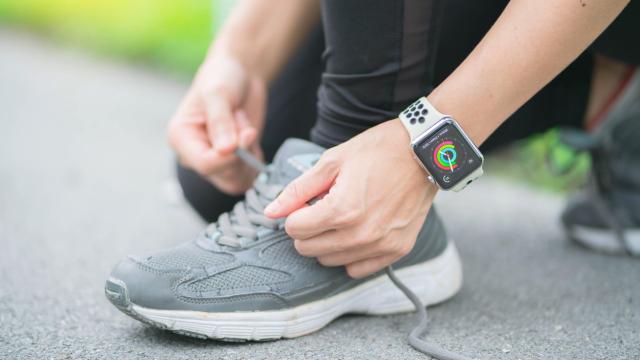If you’re like me, your Apple Watch is essentially glued to your wrist. A walk almost feels like wasted steps if my Apple Watch isn’t there to track each stride. And given that many of us rely so heavily on fitness bands to inform us about our exercise each day, we want that information is as accurate as possible.
No fitness tracker is perfect; whether you’re using an Apple Watch or a Fitbit, the numbers you see on your screen are never going to be exact. Still, maintaining your health doesn’t require exact figures; as long as your calories, exercise distance, and pace are all reasonably accurate, you can make smart progress towards your goals.
So, how do you make sure that your Apple Watch is recording your exercise data with as much accuracy as possible? Through a combination of settings, personal information, calibration, and proper use.
Check your Apple Watch settings
The first thing you should do is make sure that you have the proper settings enabled on your iPhone. Without these settings, your watch won’t receive the information it needs to accurately track your workouts.
To start, open your iPhone’s Settings app, then head to Privacy > Location Services. Here, ensure that “Location Services” is turned on; this is the blanket setting that controls whether or not apps and services can access your location. Once you confirm that setting is enabled, scroll down and choose System Services. Here, make sure that “Motion Calibration & Distance” is also turned on.
How to calibrate your Apple Watch
With these settings checked, it’s time to calibrate your watch, and there are two ways to go about it. You can calibrate the watch without overwriting any previous calibration data, or you can reset your calibration data and then calibrate your watch. Let’s first take a look at how to calibrate the watch in general.
You won’t find a setting or option to calibrate your Apple Watch; instead, you calibrate it by simply going for a walk (or run). Where you go for your stroll matters, however: You’ll want to make sure you’re walking somewhere flat, with clear skies that won’t interfere with the GPS signal, like a high school track. You only need to bring your Apple Watch unless you have a Series 1 or earlier — those older models require an iPhone for GPS.
When you’re all set, go ahead and start an Outdoor Walk or Outdoor Run from the Workout app on your watch. You’re going to need to walk or run for 20 minutes for your Apple Watch to fully calibrate. You don’t need to do it all at once, however, so feel free to stop the workout and start another at a later time. What’s more important to consider is your pace; you should keep the same speed for the entire 20 minutes, so if you find it easier to walk for that period of time, we encourage you to do so.
If you tend to work out at different speeds, you’ll want to do multiple calibrations for your various paces. In case you’re wondering, yes, your Apple Watch is likely calibrating when you walk or run outside already. If you’re not often working out in a flat open space, however, or at a steady pace for at least 20 minutes, you might not have the cleanest calibration data on your watch.
How to reset Apple Watch calibration data
Like I said, your Apple Watch can calibrate anytime you walk or run in an open space. However, it’s still working with previous calibration data; if, for some reason, an earlier calibration was bad, it might be throwing off your readings. In order to calibrate your Apple Watch cleanly, you’ll need to reset that data.
It’s easy to do, if you know where to look. Open the Watch app on your iPhone, then head to Privacy. Now, tap “Reset Fitness Calibration Data.” On the pop-up, choose “Reset Fitness Calibration Data,” and your iPhone will wipe all previous calibration data from its records. Now, you’re free to do a 20-minute walk or run to refresh your Apple Watch’s tracking abilities.
How to update your personal information
Your Apple Watch also takes into account your age, sex, height, weight, medications, and whether you use a wheelchair in tracking your fitness. In order to get the most accurate read, you’ll need to make sure these details are fully up to date.
Open the Watch app, then head to Health > Health Details. Here, you’ll see the information that you’ve previously entered. If it all checks out, you’re all set. But if you need to make changes, it’s easy to do so. Just tap “Edit” in the top right, then alter any of the information here.
Make sure you’re wearing your Apple Watch correctly
How your wear your Apple Watch can affect the readings you get after a workout, as well as general tracking throughout the day. Make sure the Apple Watch is on top of your wrist and has a snug fit without being too tight. This position gives the sensors the best chance to read your heart rate as well as track your steps.
Speaking of tracking steps, you should be mindful of where your watch is as you’re walking. You’ll receive workout credit for walks without a workout enabled, so long as your Apple Watch arm swings as you walk. If it doesn’t, say because you have both hands on a stroller, or you’re holding up a coffee, the watch won’t be able to properly track or credit the exercise. In those cases, make sure to turn on an Outdoor Walk so the watch knows what you’re up to.
Don’t have an Apple Watch, but want one? Make sure you stop by our coupon page to save on an extended selection of Apple devices and services, including up to 20% off.

Leave a Reply
You must be logged in to post a comment.